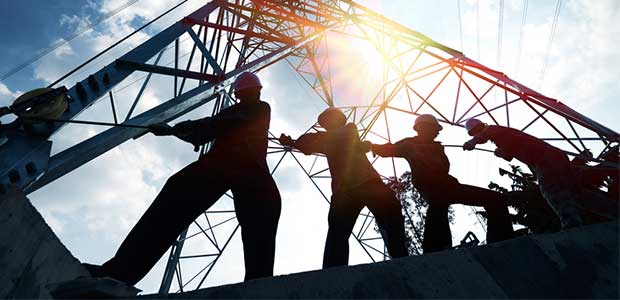
Construction Industry Is Seeing a Growing Demand for Workers
Trends around the country suggest that the construction industry is having increasing trouble finding people to hire and work overtime. Now, companies and projects are suffering because of it.
The last few years in the construction industry have shown a growing demand for workers—and the reasons may vary. Ohio media site Crain’s Cleveland Business uses the state of Ohio as an example representative of the industry as a whole.
The situation is not what you might expect. In fact, Northeast Ohio building and real estate types have actually seen good project growth over the last two years. Nonetheless, their biggest business constraint is the worry about securing skilled workers, not a lack of projects.
Many industry officials are not feeling as optimistic as they have in the past about future construction business, said Roger Gingerich, partner-in-charge of the construction and real estate practice at Skoda Minotti.
“The feeling among many contractors is that they will make as much money as the number of people they can hire will allow them to,” Gingerich said in a Tuesday, Oct. 15, phone interview. “Everything points to people being cautious. We're trying to keep the people we have. It's hard to hire new people. But there is more work out there we could be doing.”
Across the state of Ohio, construction industry professionals have lower expectations for the industry compared to previous years. According to a Skoda Minotti report, only 45 percent of respondents said they expect more construction opportunities in Northeastern Ohio—which is down from 52 percent last year. Their predictions for growth outside Northeast Ohio also dipped: 51 percent in 2019 as opposed to 56 percent in 2018.
However, while project opportunity fluctuates, 55 percent of construction companies reported that their biggest concern was the need for skilled labor. This is up from 53 percent last year.
“This concern grows every year,” Gingerich said. In Skoda Minotti's 2013 survey, six percent of the respondents saw it as a business threat.
While there are a few potential reasons for this, one main one seems to be the nature of demands by institutional and commercial clients as well as gaps in age and skill. According to Tim Lavelle, president of a Cleveland mechanical contractor for plumbing, heating and air conditioning, institutional and commercial clients usually have workers on call after five p.m., which cuts into family time. Union halls provide workers for big construction jobs, but many workers do not want to work later into the day or evening.
Twenty years ago, it wasn't difficult to find people willing to work overtime, but it's difficult today, said Dominic Ozanne, president and CEO of Cleveland-based Ozanne Construction Co.
“It's good they want to spend more time with the family, but it changes the equation in the industry when they don't want overtime,” Lavelle said.
In addition to finding people willing to work untraditional hours, there is a large skill gap between employees in the industry. Lavelle said he has two openings for institutional and commercial client staffing and estimates it takes six years to get a hire who’s new to the trade up to speed. In Skoda Minotti's survey, securing skilled labor solutions was cited as the highest priority by 62 percent of the respondents this year, up from 57 percent last year.
This skills gap is, in part, due to the increasing age gaps in the industry. Simply put—not many young people are working in the industry anymore. According to one ConstructConnect article from 2018, the average age of a skilled construction worker in the U.S. is about 50 years.
As a result of this increasing demand in skilled labor, construction companies around the country have seen an increased delay in projects. The more construction projects that are delayed indefinitely, the more likely existing infrastructure will continue to deteriorate, the more likely costs for new facilities will escalate, and the more likely the average American will see an increase in taxpayer dollars.
As we see these trends in the industry, what have employers and companies been doing to find solutions? The majority of companies—57 percent—said they are increasing salaries. Another 46 percent say they have started employee appreciation programs. Forty-six percent say they are partnering with trade and high schools.
States like Oregon have begun working with state legislators to get millions of dollars in state funds dedicated to vocational, technical, and shop classes in public schools. The goal of these efforts is to help younger populations gain interest, skill, and accessibility to construction and infrastructure careers.
To learn about what other states are doing to combat the shortage of construction workers, go here.